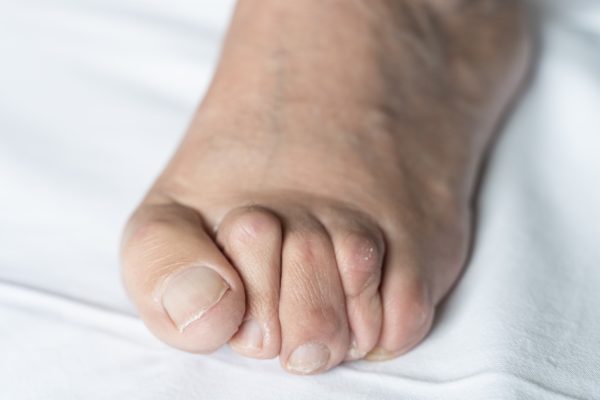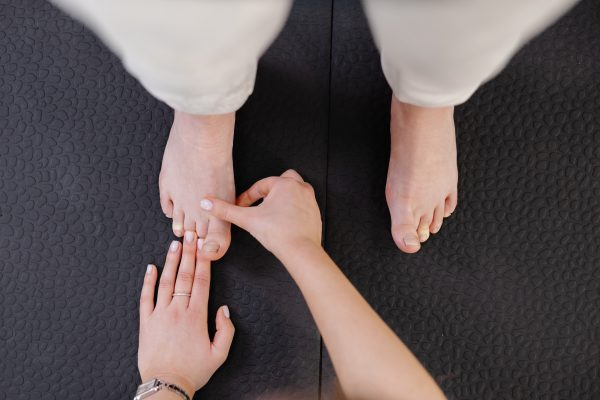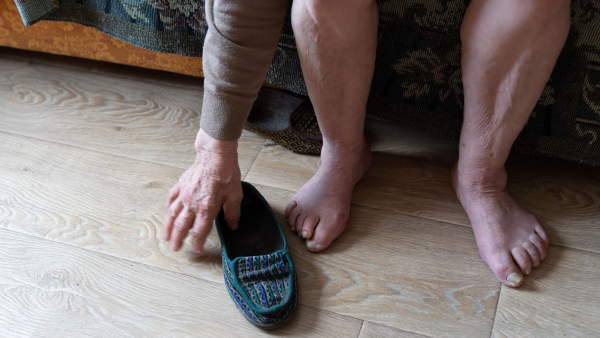If you’ve started noticing pain on your sunrise stroll on a beautiful Florida beach, growing calluses after every round of golf, or that you own a lot of shoes that don’t seem to fit right, it may be time to learn about hammertoes.
Have you noticed a toe that bends downward, rubbing painfully against your shoe with every step? What may seem like a minor cosmetic issue is often a sign of a common — and progressive — foot condition: hammertoes. Left untreated, hammertoes can become more rigid, more painful, and harder to correct.
In this blog, we’ll cover what hammertoes are, their symptoms, causes, and the treatment options available from simple home care to surgical correction. By the end, you’ll know a little more about what to expect and why early care from a podiatrist is key to preventing worsening pain.

What Is a Hammertoe?
A hammertoe is a toe deformity that occurs when the toe bends abnormally at its middle joint, giving it a hammer-like shape. This condition most often affects the second, third, or fourth toes.
Hammertoes, also called mallet toes, are more than just a cosmetic concern. This common foot deformity can lead to pain, corns, calluses, and difficulty finding comfortable shoes. Many people first notice hammertoes when toe pain starts interfering with daily activities or exercise.

Flexible vs. Rigid: Why It Matters
There are two types of hammertoes.
When there is flexibility in the toe, you have what is unsurprisingly called a “flexible” hammertoe. In this case, the joint can still be straightened manually. These are easier to treat with non-surgical approaches such as orthotics, exercises, and footwear changes.
On the other foot (or hand), you may not have those same options when the toe joint becomes fixed and cannot move. Rigid hammertoes often require surgery for lasting correction.
The bottom line is that the earlier you address a hammertoe, the more likely you are to avoid surgery.

Hammertoe Symptoms To Watch For
Hammertoes may develop slowly, and symptoms can include:
- Pain or irritation when wearing shoes
- A toe that bends downward at the middle joint
- Corns or calluses forming where the toe rubs against shoes
- Swelling, redness, or burning sensations
- Limited movement of the affected toe
If toe pain is disrupting your daily routine, it’s a sign to seek professional care. Just “putting up with it” isn’t going to make the pain go away.

What Are Risk Factors and Causes of Hammertoes?
Several factors can lead to hammertoe development, including:
- Wearing tight, narrow, or high-heeled shoes
- Muscle imbalances that pull the toe into a bent position
- Genetics (inherited foot structure)
- Arthritis or other joint conditions
- Trauma or injury to the toe
Even lifestyle choices, like spending long hours on your feet in unsupportive shoes, can increase your risk.

Getting Relief: Hammertoe Treatment Options
Hammertoe treatment options depend on whether your hammertoe is flexible or rigid.
Non-Surgical Treatment for Flexible Hammertoes
These approaches often work best when hammertoes are caught early:
Custom orthotics or splints can help correct muscle imbalance and realign the toe.
Shoe modifications, such as choosing shoes with a wide toe box and low heels, can reduce pressure.
Exercises for hammertoes may include simple stretches, such as picking up marbles with your toes or gently straightening the toe, may improve strength and flexibility.
When Surgery Is Needed
If conservative care fails or the hammertoe is rigid, surgery may be recommended. Surgical procedures are designed to straighten the toe permanently by realigning bones, releasing tight tendons, or fusing small joints.
While surgery is effective, podiatrists generally reserve it for advanced cases, another reason why early intervention matters.

Don’t Live with Toe Pain: Act Now
Hammertoes won’t fix themselves, and waiting too long can turn a flexible hammertoe into a rigid one that requires surgery. The good news? Podiatrists have many effective treatment options to help you walk comfortably again.
If you’re experiencing toe pain, rubbing, or swelling, schedule an appointment with a podiatrist today. Getting care now can mean the difference between a simple solution and a more complex surgery later.Don’t let hammertoes slow you down; take the first step toward relief and find the Southwest Florida Foot & Ankle location closest to you to ask questions or schedule an appointment.
Categorized in: Blog
Comments are closed